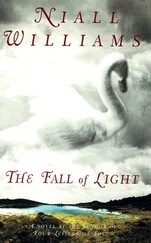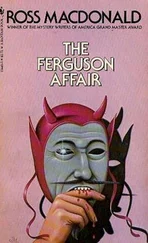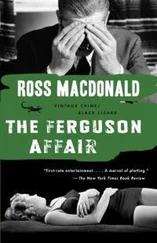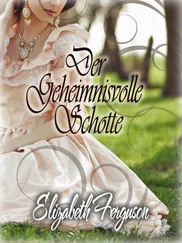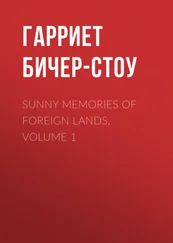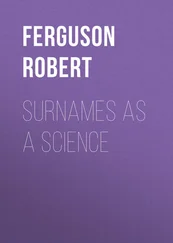THE NAZI VOTE IN FÜRTH AND GERMANY 84
NAZI VOTES
SHARE OF FÜRTH TOTAL
NAZI SHARE OF REICH TOTAL
May 4, 1924
9,612
25.6
6.5
December 7, 1924
3,045
8.2
3.0
May 20, 1928
2,725
6.6
2.6
September 14, 1930
10,872
23.6
18.3
July 31, 1932
17,853
38.7
37.3
November 6, 1932
16,469
35.6
33.1
March 5, 1933
22,458
44.8
43.9
As at the national level, the Nazis won votes disproportionately from the old “bourgeois parties”: the National People’s Party, the People’s Party, and the Democratic Party. Defections from the Social Democrats, Communists, and Catholic Center Party were more rare. This transfer of allegiance was in many ways led or mediated by economic splinter groups like the German Nationalist Clerical Workers’ Association and conservative organizations like the monarchist Royal Bavarian Homeland League, the “Faithful to Fürth” society, and veterans’ associations like the Kyffhäuser League. 85Typical of the proto-Nazi associations that flourished in South Germany in the Weimar period was Young Bavaria, which proudly proclaimed its rejection of “the exclusive rule of pure reason, a legacy of the French Revolution.” 86An equally important factor was the strongly “German national” tone of some Protestant clergy, which echoed the often explicitly religious language of some Nazi propaganda. 87For the historian Walter Frank, born in Fürth in 1905 and already an ardent German nationalist in his teens, the transition from his father’s German Nationalist milieu to the National Socialists was easy. He was among many academic overachievers who gravitated toward the Nazis at this time; Ludwig Erhard, another talented Fürther of the same generation, was unusual in being immune to their charm without being a socialist. 88
The remarkable thing is that all these socially respectable groups ended up giving their votes to a movement that systematically used violence as an electoral tactic and explicitly advocated it as a governmental strategy. Part of the explanation is simply that the Nazis ran more effective campaigns than their rivals. First, NSDAP membership in Fürth rose from 185 in March 1930 to 1,500 in August 1932. The new recruits worked hard for their party. After police restrictions were lifted in early 1932, the party held almost weekly events in Fürth, organizing no fewer than twenty-six meetings in the two weeks before the first election of that year. 89In the run-up to the second election of 1932, the Nazis held eight major election meetings and almost nightly “evening discussions” ( Sprechabende ). But violence also played a crucial role.
That the streets of Fürth became increasingly dangerous was not entirely the Nazis’ fault. On the left, the Communist Party (KPD) and socialist organizations like the Reichsbanner also liked to stage rowdy demonstrations and to disrupt the meetings of their political opponents. As in the 1920s, the Nazis found much of Fürth to be hostile territory. On April 9, 1932, fifteen SA men were set upon by Iron Front members as they left the pro-Nazi Yellow Lion pub. Two months later Nazi supporter Fritz Reingruber was beaten up for being a “Swastikist”; the same fate befell another Nazi caught selling the NSDAP newspaper, the Völkische Beobachter . 90The police watched helplessly on the evening of July 30 as a mob threw potatoes and stones at a Nazi motorcade going from Fürth airport to the Nuremberg stadium; the car carrying Hitler himself was among the vehicles hit. 91There was more muted hostility in January 1933 when Sturmabteilung, Schutzstaffel (SS), and Hitler Youth members participated in the town’s annual Fasching (Mardi Gras) parade. A public meeting in the Geismann Hall ended in yet more violence when KPD members refused to stand for the national anthem. 92
Fürth was not Chicago. Firearms played no role in the gang warfare between Communists and Nazis. Yet the effect of all this unruly behavior was insidious. At one and the same time, it made people yearn for the old German ideal of “tranquillity and order” ( Ruhe und Ordnung ) and accept that further violence might be necessary as a means to that end. With Hitler’s appointment as Reich chancellor on January 31, 1933, the Nazis seized their moment, staging a large torch-lit parade through the town center, from the Kurgartenstrasse through the Nürnbergstrasse and the Königstrasse to Dreikönigsplatz. Now they took the offensive. On the night of February 3, between sixty and seventy SA men attacked the Communist pub Am Gänsberg. After the Reichstag fire at the end of the same month had provided the perfect pretext for emergency legislation “For the Protection of the People and the State,” the election of March 1933 could be conducted in a new atmosphere of official intimidation. On March 3 there was another large-scale torch-lit parade through Fürth. On the evening of March 9 a crowd of between ten and twelve thousand people gathered outside the Rathaus to watch the raising of the red Nazi flag together with the reassuring old imperial black, white, and red flag above its tower, and to hear the Landtag deputy and Streicher sidekick, Karl Holz, proclaim the “German Revolution.” “Today,” Holz declared, “marks the beginning of the great clean-up in Bavaria. Out with the black Mamelukes [ sic ]. Even Fürth, which was once red and totally jewified [ verjudet ], will once again be made into a clean and honest German town.” 93
Those words foretold a far graver threat to the Jews of Fürth — including the loyal patriot Louis Kissinger and his family — than even the most pessimistic among them yet understood.
CHAPTER 2 Escape
If we could go back 13 years over the hatred and the intolerance, I would find that it had been a long hard road. It had been covered with humiliation, with disappointment.
— HENRY KISSINGER to his parents, 1945 1
I
It was late September 1934. On the eve of the annual St. Michael’s Festival in Fürth, the town preacher Paul Fronmüller spoke for many when he gave thanks to God “for sending us Adolf Hitler, our rescuer from the alien onslaught of the godless horde, and the builder of the new Reich, in which the Christian religion will be the foundation of our life as a people.” 2
For the majority of Fürth’s Christian population, life had already improved after barely eighteen months of Nazi rule, and it continued to get better with scarcely a pause until the summer of 1938. In January 1933 the number of welfare claimants was more than 8,700. By June 1938 it would be down below 1,300. 3The Nazi economic recovery was real, and Fürth felt it.
The town looked different, too. The Rathaus was bedecked with bright red National Socialist flags; swastikas and portraits of the Führer were becoming ubiquitous. Some street names had also changed. Königswarterstrasse was now “Adolf-Hitler-Strasse”; the main square was renamed Schlageterplatz, after the proto-Nazi “martyr” Albert Leo Schlageter, who — on the eve of Heinz Kissinger’s birth — had been executed by the French for sabotaging trains in the occupied Ruhr. True, Fürth had nothing to match the annual Nuremberg rallies, weeklong festivals that attracted up to a million members of the party and affiliated organizations from all over Germany. But there were still at least fourteen official holidays and festivals, like the May 1 “Festival of the People” (appropriated from the Social Democrats’ May Day) and the April 20 celebration of Hitler’s birthday. 4And for those who preferred a night at the opera to a street parade, the new director of the reopened and refurbished city theater, Bruno F. Mackay, offered a wholesomely Germanic diet including Goethe’s Egmont, Schiller’s Kabale und Liebe, and Lessing’s Minna von Barnhelm . When Hitler himself paid a visit to Fürth on February 11, 1935, he was treated to a performance of Wenn Liebe befiehlt (“When Love Commands”), an innocuous operetta. The echo of the Nazi slogan Führer befiehl, wir folgen! (“Führer Command, We’ll Follow!”) was apt.
Читать дальше


